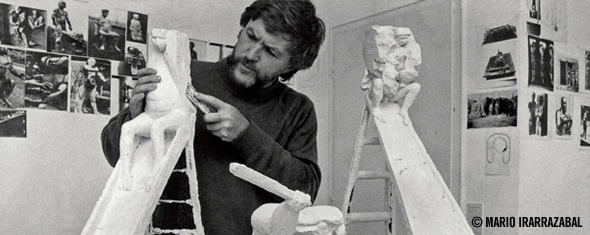There’s rarely a day when the sculptures of hands “coming out” of the sand in a beach in Uruguay, the Atacama desert in Chile or the city of Venice are alone – tourists and locals are constantly around them, taking photos, observing them from every angle.
In Uruguay, the sculpture is so famous it has become a symbol of Punta del Este, the beach resort where it stands but what most people aren’t aware of is the incredible story of its creator.
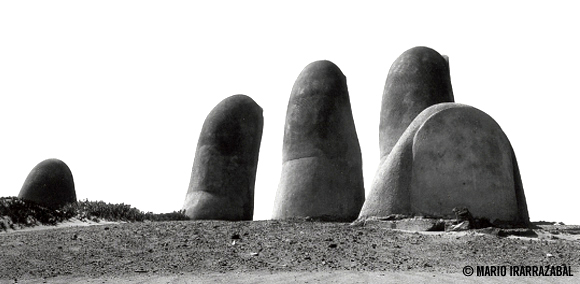
Nearly a decade before the sculpture was unveiled, Chilean art professor Mario Irarrázabal was working in his studio in the Chilean capital, Santiago, where from his window he watched on as Augusto Pinochet was taking power by force – a tragic event that would transform his life and country forever.
He saw the city skyline fill with thick smoke after bombs hit the Presidential Palace, making way for the new military regime.
Life quickly changed, so much so that Mario felt he was back in post-war Berlin, where he had lived between 1967 and 1968.
“One didn’t know what to expect, but it was like before a war,” he said.
On the days that followed the coup, many families quickly disposed of anything that might mark them as having anti-Pinochet political views.
“They started to look for people. You didn’t have any information so the fright was enormous. You didn’t know what to burn or even hide.”
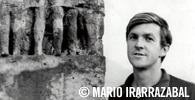
But his political views and activities did not go unnoticed.
For Mario, things took a turn for the worse a few days after the coup. At around 3:00 am, Pinochet’s political police, the DINA, came knocking on the door of the vicarage where he was staying with his brother, a local priest.
The police officers questioned Mario and several priests who were in the vicarage, accusing them of supporting left-wing activists. Eventually, they took only Mario with them, probably fearing a backlash from the Catholic Church if they targeted priests.
Three days would pass before Mario realized where he was being held.
Always blindfolded, never fed, Mario was at times held with others in a room, at times alone on his back on the tiled floor of a bathroom. By the third day he started having hallucinations.
He didn’t know where he was, and tried to pick out any detail from beneath his blindfold – a bit of floor, a wall decoration, anything that would allow him to figure out where he was.
“It was a desperate effort to retain something of reality,” he explains.
But the worst part wasn’t the uncertainty of not knowing where he was, the threat of being hit for peeking, or even the torture being meted out by his captors. The worst part was the waiting.
“One waited….an eternity… with the others in a room, blindfolded. And then suddenly they would call someone…. and they would return in pieces (emotionally),” he recalls.
“The greatest torture was when they found a number or a name and then you suddenly felt that you had given them that person. That was the worst for me.”
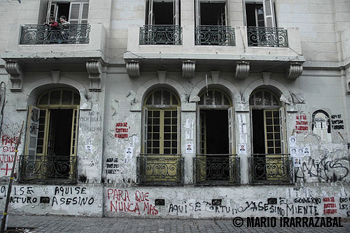
After his release he realized he had been held in Londres 38, an old colonial house in the heart of Santiago where the only sounds he could hear were the screams of other detainees and the bells from the local church.
Five days after being taken there, and without any warning or explanation, the police ferried Mario along with others in a van through the city centre: “It seems it was during the day….I heard people talking and traffic. For the first time I realized that life carried on.”
Their destination was the Estadio Chile, a sports venue where as many as 500 activists were held and tortured.
He remembers how the guards handed out chocolate flan while they forced people to sign testimonies saying they had not been ill-treated. Mario tried to feign illness or misunderstanding to avoid signing. Then, without warning but with the help of a Catholic monsignor and a human rights lawyer, he was released.
“It was very emotional – when I was free, I felt so grateful to these people.”
Mario was then held under house arrest and left with a strong desire to speak out about his ill-treatment in detention.
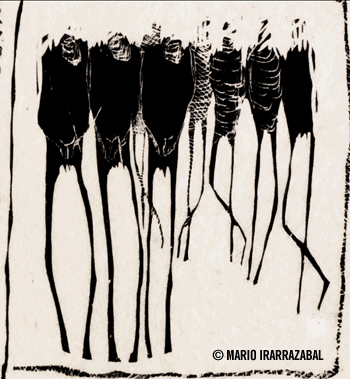
For decades, Mario has turned his experiences into works of art. He uses materials such as metal to express his experiences of life in Cold War Berlin in the late 1960’s to his days of detention in one of Pinochet’s most notorious torture centres in his native Chile.
The drawings he made after his time in detention show some of his memories of what happened then. Dark figures, some with white scratches on them, some with their hands tied, others blindfolded.
“I was trying to show what the Chilean society was feeling those days,” he explains.
Even today, Mario is haunted by the past. Many of those responsible for the illegal arrests and torture people like Mario suffered haven’t been brought to justice.
“Every time a door banged I would get awful stomach aches, I was sure that they were coming to take me again,” he said.
